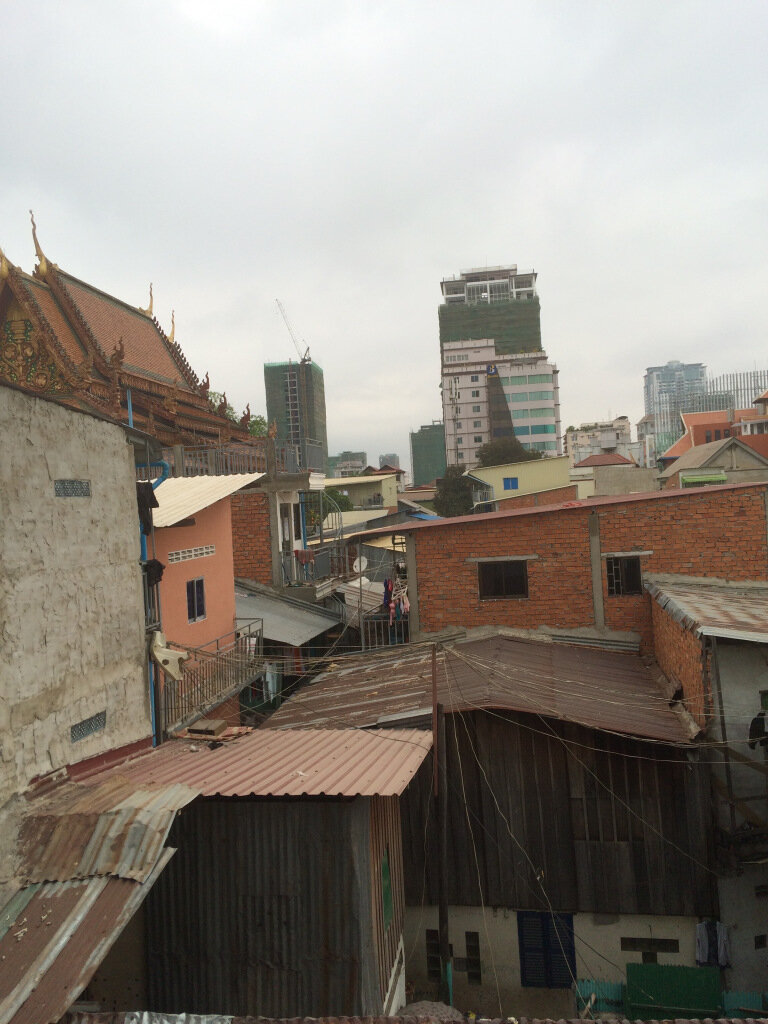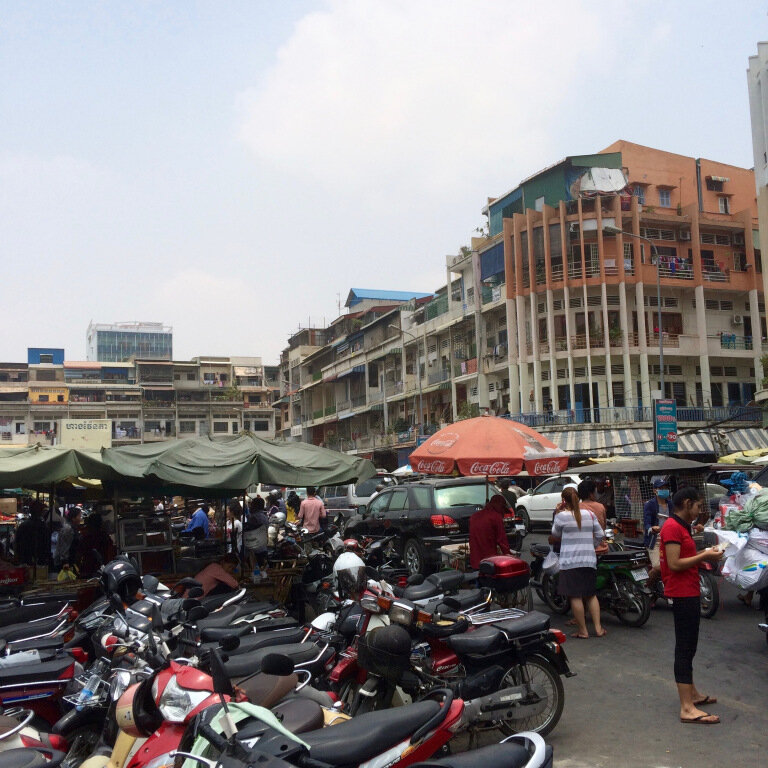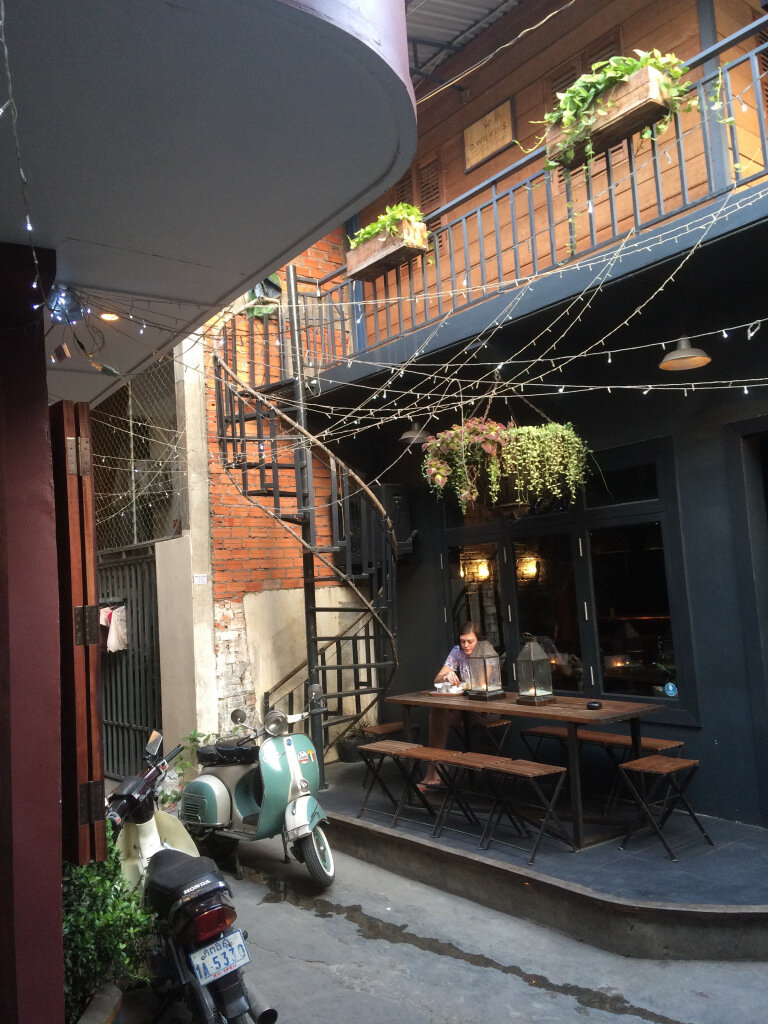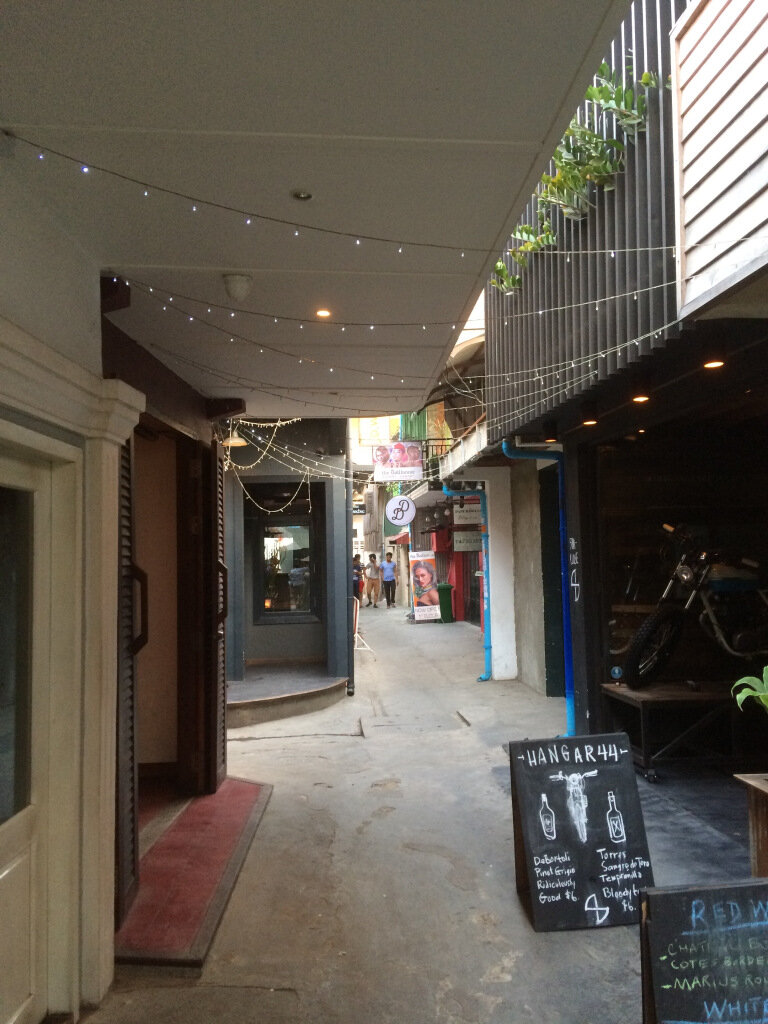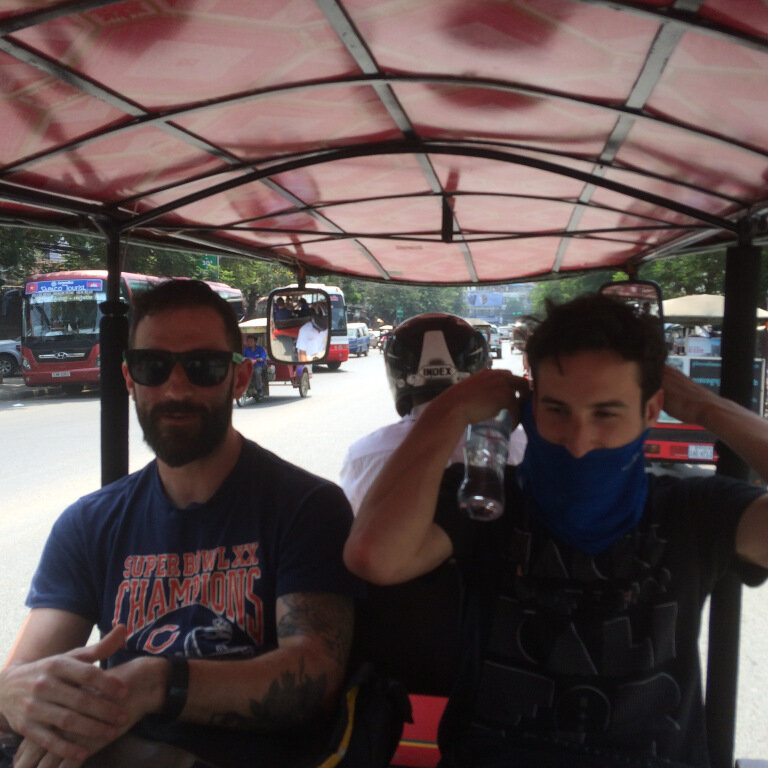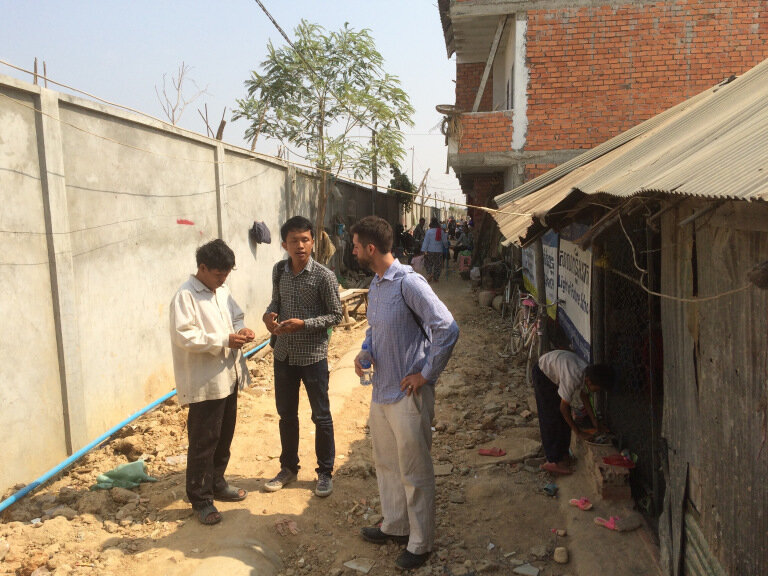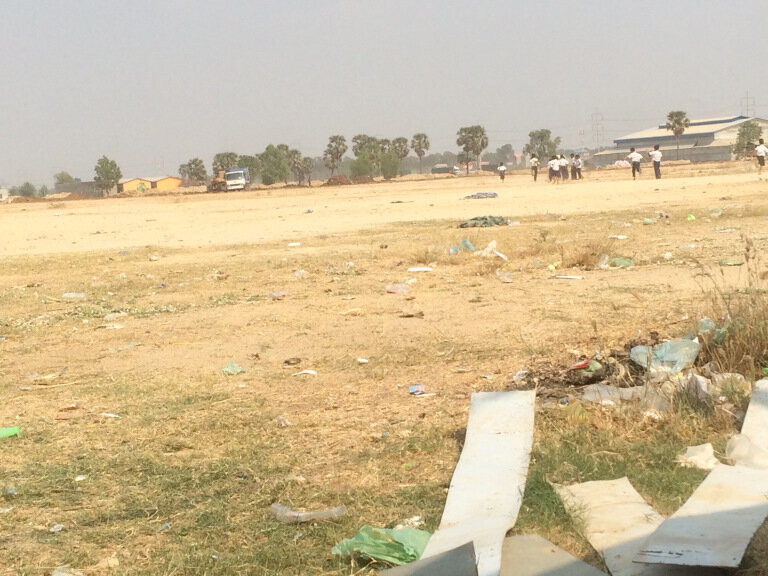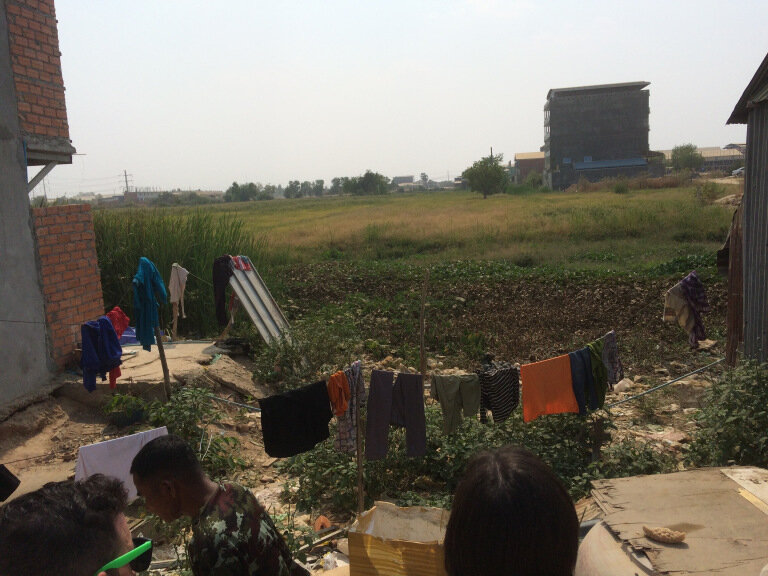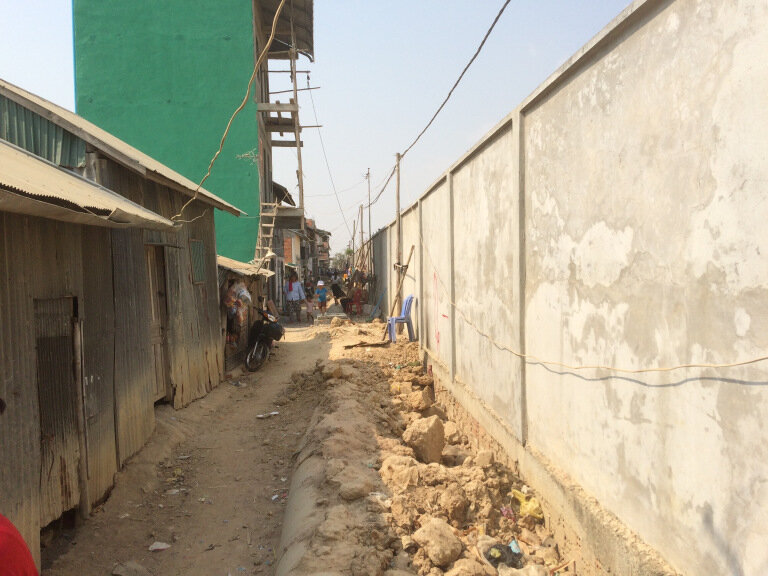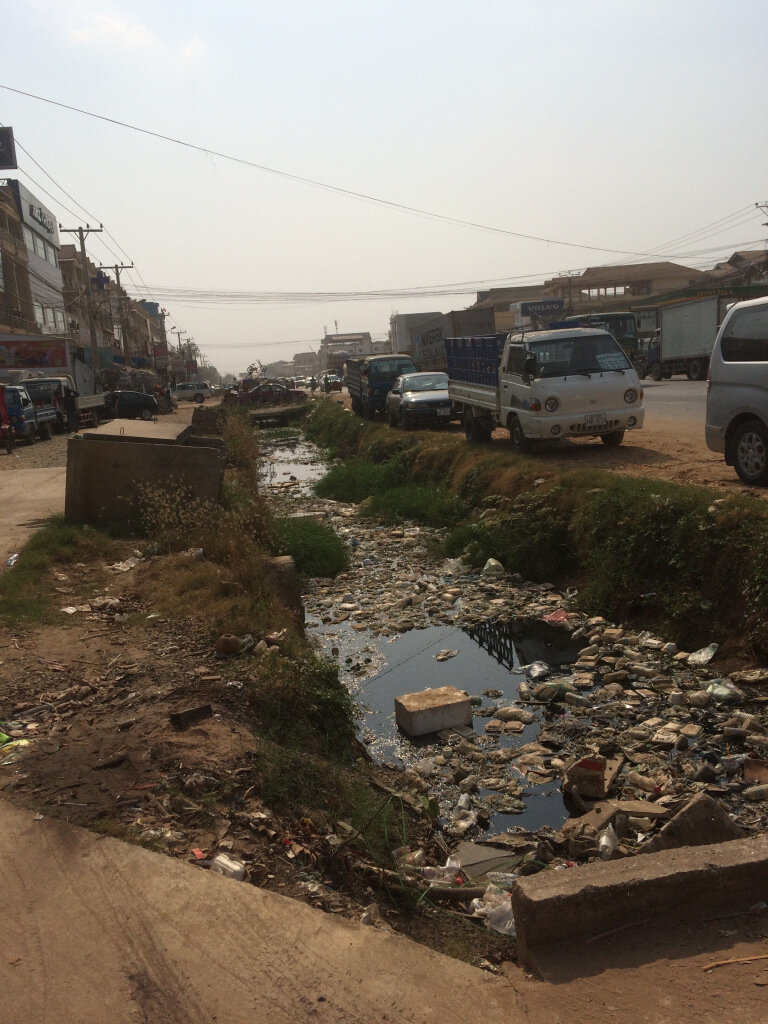First Week in Phnom Penh
We made it back to the bustling, dusty, smoggy capital of Phnom Penh. There are a lot of challenges here, Cambodia is home to the most NGOs of any country in the world. Institutionalized violence has left huge scars on the country and its physical and cultural landscapes. Conversations about history, landscape, architecture, art, and planning inevitably involve a distinction of before-and-after the cultural cleansing of the Khmer Rouge.
I am currently reading about geopolitics and economics of the South China Sea, and being in a place where informal urban communities and battered colonial architecture are punctuated by prototypical skyscrapers built by Chinese, Korean and Japanese investors conjures mixed feelings.
Our professor, Ben Spencer, has got to be one of the most inspiring individuals I have had the pleasure of working with. He has made the transition to Cambodia very comfortable and stress-free. He has also somehow between having a family, finding an informal urban community that is willing to cooperate with the organization (IUCI), setting up a graduate-level landscape architecture curriculum, cooperating with a foreign university, and presumably still wrangling academic bureaucracy back home, managed to learn Khmer.
Our apartment building is right next to an informal urban community that was allowed to improve in place — it’s an interesting place full of tiny twisting alleys that dead-end into crevices full of skittering street cats and older women cooking on stoops. It butts right up against the rest of the neighborhood, which is brimming with expats and becoming pretty posh.
Ben found us a really nice apartment with a very accommodating landlord only two blocks from his apartment. The neighborhood is called Tonle Bassac and it’s full of expats, and there are a lot of foreigner-run cafes and bars serving Western food and cocktails, catering to the Western cafe/pub culture that didn’t exist here before.
Once everyone had arrived, we piled into tuk tuks and Ben bought us all bikes. At first traffic here seems terrifying. Medians are demarcated only on main boulevards, and you’re never quite sure if a street is one-way or two-way, but it doesn’t really matter. There is an ‘informal lane’ on the side of every street where motos and tuk tuks are permitted to drive opposing traffic in order to reach their destination or merge in the other way. Basically it’s a free-for-all, but nobody drives very fast, and everybody is VERY aware of their surroundings so they use common sense and nobody gets hurt.
Ben took us on a little tour of the Orussey Market area, the Riverside district near the Royal University of Fine Arts, and finally showed us around the campus where we ditched our bikes and piled back into tuk tuks. We took the tuk tuks about 45 minutes out of town (very dusty, smelly ride) to see the community where we will (hopefully) be able to collaborate on a project.
Later we visited the community and were greeted with funny looks by a handful of adults, but the kids waved hello, and most people smiled at us. The man in the picture above followed us around and seemed suspicious of what we were doing. Pongro Senchey is a pretty interesting condition — sandwiched between a concrete wall, put up by private owners, and rice paddies, the community occupies a strip of land and the community is completely linear. It challenges design notions of ‘centers’ and ‘nodes’, but we will learn more about the community’s perceptions after the workshop. There were several holes punched in the concrete wall, and the children use the private property to the east as a play space.
After visiting the community, we went to the municipality and spoke with the head of the Sangkat (equivalent of a township or neighborhood). Fortunately, the Sangkat leader was very enthusiastic and supportive of our initiative. He was happy to have people interesting in collaborating with Pongro Senchey. Ben even conducted a lot of the meeting in Khmai!
Phnom Penh has no stormwater or sewer treatment plant — wastewater is channeled to wetlands south of the city. After colonization, this city, which annually floods in a dramatic way, is full of hardscape. We have been doing some introductory readings about this condition and by some estimates damages from flooding amount to $60-80 million per year in lives lost, and damage to buildings, agriculture, and infrastructure. However, the Mekong delta (Phnom Penh is situated at the confluence of three rivers Mekong, Tonle Sap, and Bassac) agricultural communities and ecosystem are tremendously dependent upon the annual flooding, which is estimated to produce $6-8 billion in revenues each year.

